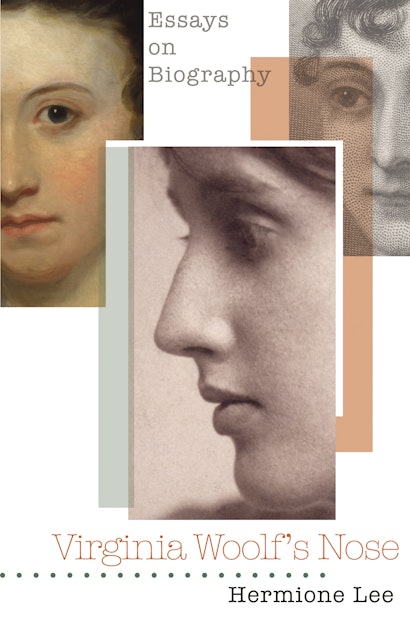Virginia Woolf's Nose: Essays on Biography


Paperback
ebook (PDF via app)
- Sale Price:
- $17.47/ÂŁ14.00
- Price:
-
$24.95/ÂŁ20.00 - ISBN:
- Published:
- Jun 5, 2018
- Copyright:
- 2005
30% off with code PUP30
- Not for sale in the Commonwealth (except Canada)
-
Audio and ebooks (EPUB and PDF) purchased from this site must be accessed on the
91ĚŇÉ« app. After purchasing, you will receive an email with
instructions to access your purchase.
About audio and ebooks - Request Exam Copy
What choices must a biographer make when stitching the pieces of a life into one coherent whole? How do we best create an accurate likeness of a private life from the few articles that linger after death? How do we choose what gets left out? This intriguing and witty collection of essays by an internationally acclaimed biographer looks at how biography deals with myths and legends, what goes missing and what can’t be proved in the story of a life. Virginia Woolf’s Nose presents a variety of case-studies, in which literary biographers are faced with gaps and absences, unprovable stories and ambiguities surrounding their subjects. By looking at stories about Percy Bysshe Shelley’s shriveled, burnt heart found pressed between the pages of a book, Jane Austen’s fainting spell, Samuel Pepys’s lobsters, and the varied versions of Virginia Woolf’s life and death, preeminent biographer Hermione Lee considers how biographers deal with and often utilize these missing body parts, myths, and contested data to “fill in the gaps” of a life story.
In “Shelley’s Heart and Pepys’s Lobsters,” an essay dealing with missing parts and biographical legends, Hermione Lee discusses one of the most complicated and emotionally charged examples of the contested use of biographical sources. “Jane Austen Faints” takes five competing versions of the same dramatic moment in the writer’s life to ask how biography deals with the private lives of famous women. “Virginia Woolf’s Nose” looks at the way this legendary author’s life has been translated through successive transformations, from biography to fiction to film, and suggests there can be no such thing as a definitive version of a life. Finally, “How to End It All” analyzes the changing treatment of deathbed scenes in biography to show how biographical conventions have shifted, and asks why the narrators and readers of life-stories feel the need to give special meaning and emphasis to endings.
Virginia Woolf’s Nose sheds new light on the way biographers bring their subjects to life as physical beings, and offers captivating new insights into the drama of “life-writing”.
Virginia Woolf’s Nose is a witty, eloquent, and funny text by a renowned biographer whose sensitivity to the art of telling a story about a human life is unparalleled—and in creating it, Lee articulates and redefines the parameters of her craft.